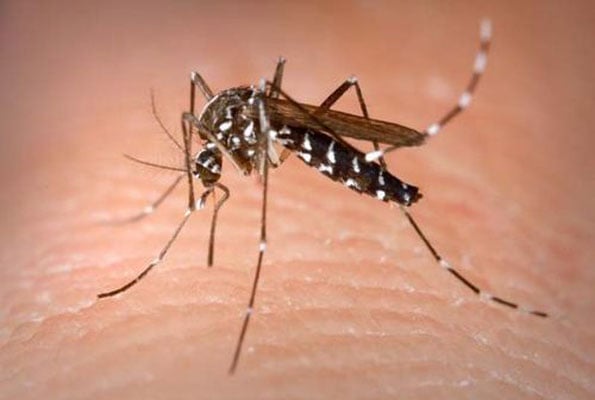Prime
Yellow fever: Prevention is paramount

The female aedes mosquito which feeds on human blood is responsible for the yellow fever infection.
The last time we had heard of yellow fever in Uganda was in 1972 which is close to over 40 years. But the infection has struck again, and according to the Ministry of Health, since November, 45 people have so far died from yellow fever and more than 200 others have been infected with this viral infection in the northern part of Uganda. The infection has been reported in the districts of Abim, Agago, Gulu, Arua, Lamwo, Pader, Kitgum and Kaabong.
Dr Henry Bukenya a general practitioner with Mulago National Referral Hospital says that yellow fever which is a viral disease is mainly common in the northern part of Uganda because of the conducive weather. “The weather in the northern part of the country is favourable to the aedes mosquito since it keeps on changing fast.” The doctor explains that for while we have defined wet or dry seasons or months in most parts of the country, the northern region can experience very hot temperatures at a particular time of day and cold temperatures during the same day and this creates a conducive environment for the aedes mosquito to breed within minutes. “This type of weather avails a favourable environment to the life cycle of the yellow fever spreading mosquitoes, ” Dr Bukenya says.
However, www.tinymosquito.com says that due to human activity, some species have been found in temperate areas where they lay their eggs in exterior objects where water collects like the garden pots, used tires, children’s pools, roof tanks and rain barrels.
Dr Bukenya says that yellow fever is spread to human beings by the female aedes mosquito which carries the arbovirus that causes the infection.
Dr Thomas Otyang also a general practioner at Mulago Hospital says that there are two types of yellow fever, the jungle yellow fever and the urban yellow fever. “The jungle yellow fever is common in monkeys and its spread by the female aedes mosquito which bites an infected monkey and then goes ahead to bite a human being thus passing on the virus to the latter but this type is not common. The commonest type of yellow fever is the urban yellow fever, which has hit the northern region. This type is transmitted by the female aedes mosquito which bites an infected person and then carries the virus to another person.”
Dr Otyang explains that it’s the female mosquito that transmits the virus because it feeds on blood while the male aedes mosquitoes feed on plants. “After the female mosquitoes have sucked the blood, it will take them a week to contaminate it with the arbovirus. Whenever that mosquito bites someone, it will pass on the yellow fever virus to them.”
Dr Bukenya says that in some cases, the yellow fever infections can be mild especially if the person has a high immunity whereas for others it can be fatal especially those with a low immunity like the elderly, pregnant women, people with HIV/Aids and children.
But he adds that whichever way, the infection manifests its self in various ways which will differ from person to person such as high temperature, intense headache, chills, back and limb ache, vomiting, constipation, reduced flow of urine, yellow eyes and yellow nails hence the name yellow fever. The signs will appear four to six days after the person has been infected. The other symptoms which do appear in cases of the fatal yellow fever infection are the kidney and liver failure or degeneration.
Dr Bukenya explains that even mild cases of yellow fever can lead to kidney failure. He says that when the tissues of the kidney are degenerated by the arbovirus, “this leads to a condition referred to as jaundice or yellow eyes plus yellow nails which is as a result of the excess bilirubin chemicals in the bloodstream.”
Has no cure
Since yellow fever is caused by a virus, the doctor says that it has no cure and normally most of the healing from the infection is done by someone’s immunity. Dr Vincent Karuhanga says up to 50 per cent of severely affected patients die from yellow fever if not treated. Treatment for reducing the symptoms and making the patient comfortable is given. Dr Bukenya says that the best that doctors can do when one has yellow fever is by giving them palliative care through giving the patient a lot of fluid replacement like normal saline and ringers lactate solution which help to replace the lost fluids in the body.
He advises that the best way of avoiding yellow fever is through vaccination or immunisation, a measure which has been taken up by the Ministry of Health because of the severity of the infection, which can kill someone within 14 days of its contraction. Dr Karuhanga concurs with Dr Bukenya and says vaccination which provides protection within one week (except for the pregnant, children below nine months and those severely sick with Aids who should not be vaccinated) is most useful. Spraying mosquitoes or prevention of mosquito bites are also good additional measures.
The ministry says it is going to import 2.5 million Vials of the yellow fever vaccine to protect people from being infected with the virus and the vaccine is expected in the country in January. But in the meantime, people can access this vaccine from various hospitals and health centres at a cost ranging from Shs95,000 to Shs150,000.
Dr Bukenya advises people who have visited the infected districts to get tested to rule out infection. He is however quick to add that while an infected person may move to another part of the country that is free from infection, chances of infecting people in that area are slim unless there are female aedes mosquitoes in the same area since these are responsible for transmitting the infection.




